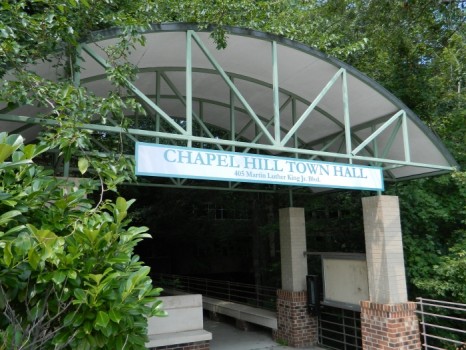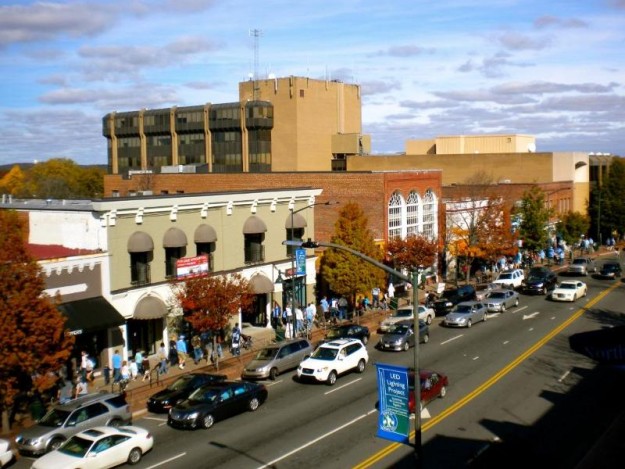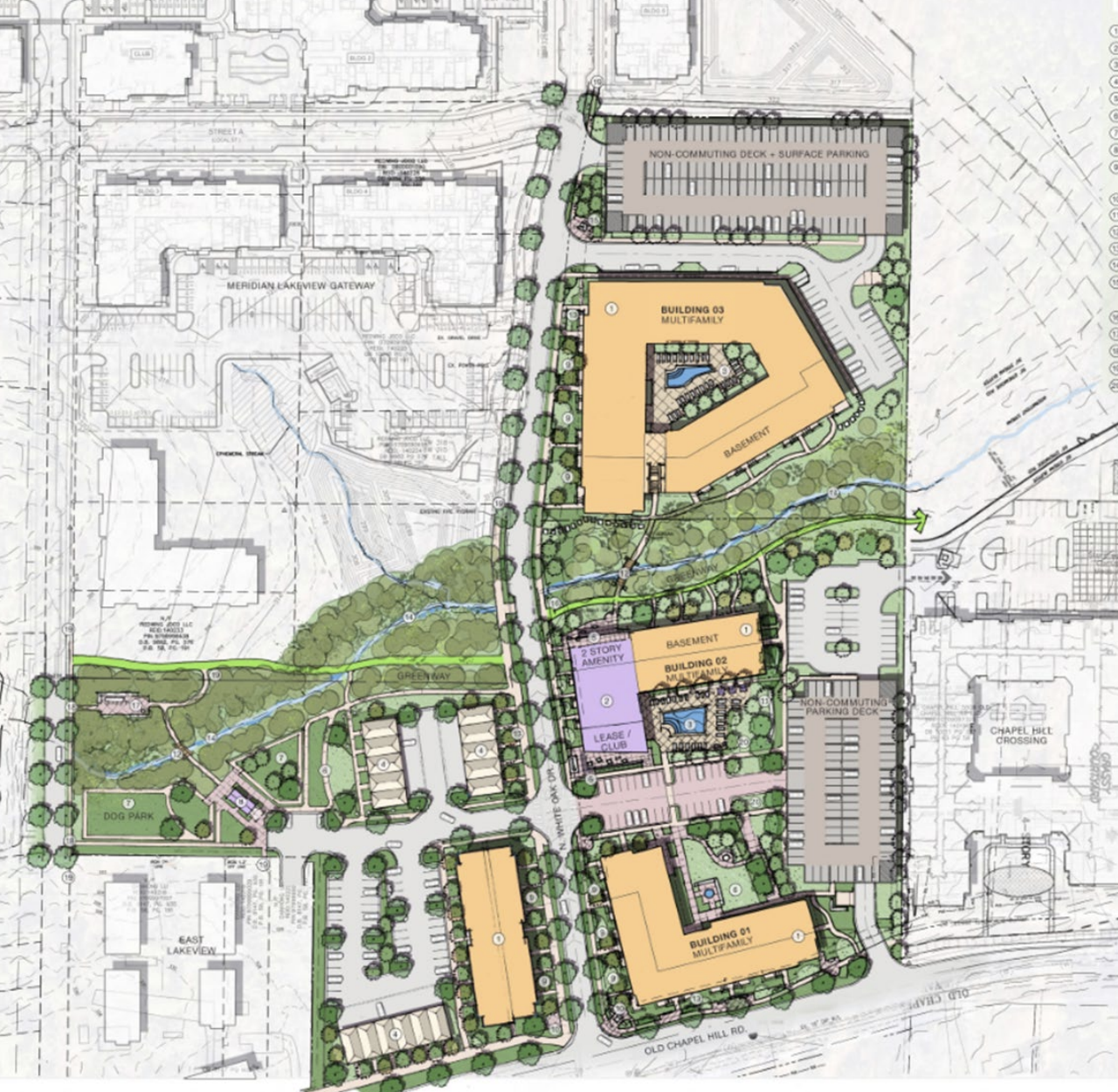The Chapel Hill Town Council recently approved a project that could bring affordable and multifamily housing to the edge of Chapel Hill. But some council members and neighbors of the future development are concerned by how the project does not support the town’s vision for the future.
From Zom Living, Old Chapel Hill Apartments seeks to bring up to 400 rental apartments and townhomes near the Durham/Chapel Hill line, located along White Oak Drive.
At a June 18 meeting, the project team shared updates to the design since the council last reviewed the development in May. Most changes focused on reducing the property’s massing, including transitional building heights and architectural elements to break up the mass.
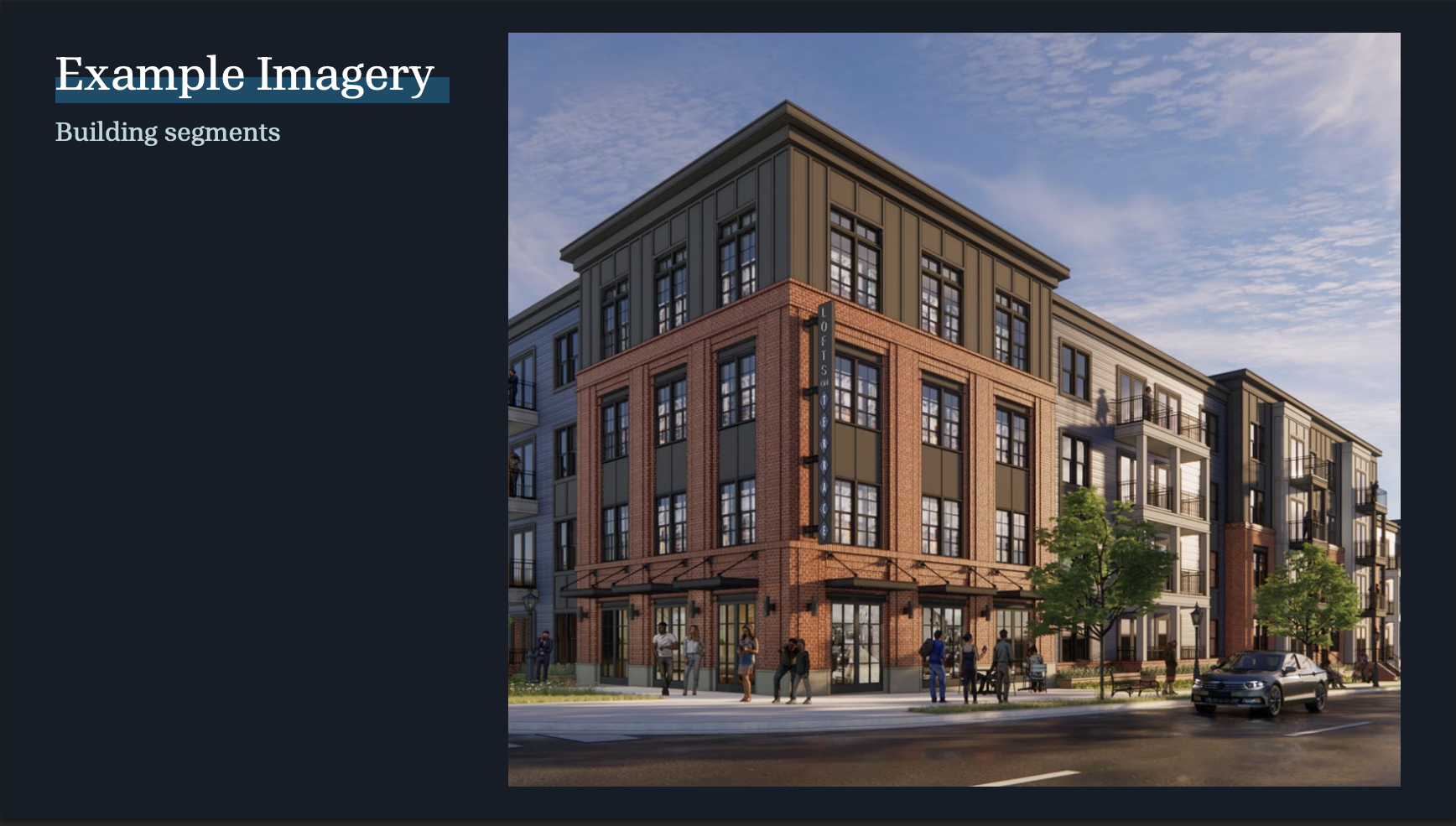
An example for how the project might use architectural design to break up building mass, in response to council feedback. (Photo via Zom Living.)
The project also features a multi-use path and trails along the site’s stream corridor, and about 10 percent of units would serve families earning 80 percent of the Area Median Income. While some council members said they would still like to see a better affordable housing offer, Council Member Theodore Nollert explained why he believes the development will be an asset for the town.
“My impression is that this is a project next to a transit corridor, and it adds desirable density, it is actually walkable and bikeable to a grocery store, which is pretty crazy for Chapel Hill,” Nollert said. “There’s a lot to like in this project.”
But the council only approved the development in a 5-2 vote, as Elizabeth Sharp and Camille Berry both said they could not support the project after the planning team removed a 30-foot right-of-way from the proposed design. The easement would have been located at the north end of the property and provided a bike and pedestrian connection across Interstate 40.
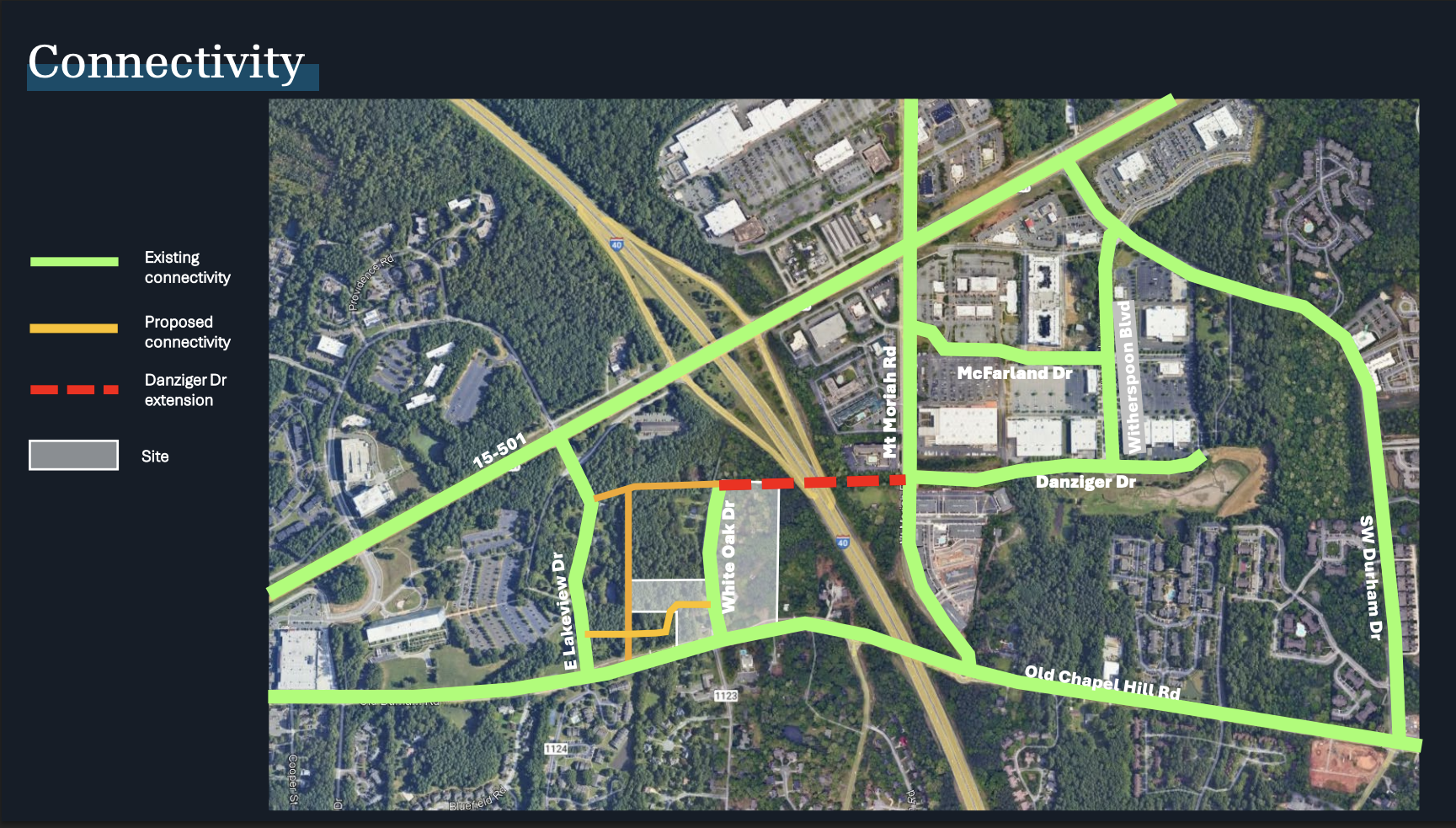
Location for the proposed right-of-way across I-40, removed from the project after the May 21 meeting. (Photo via Zom Living.)
The council and town staff largely deemed the feature infeasible after the May 21 meeting, citing both its cost and how it would reduce the number of affordable units on the property. But Berry said she is concerned by how the decision from the project team shows a lack of integrity for the town’s Complete Communities vision.
“There was disregard, disrespect for what the town said they wanted,” Berry said. “You have convinced some of my colleagues that we are better off without [the right-of-way], but you don’t think that you have to be held to the same standards, to the same vision that was shared with you, that was shared with the other [developers]. And I cannot support that. If we have a vision, then let’s stand by it.”
While Sharp said the project is technically consistent with the Complete Communities standards by being within a mile of retail and restaurants, she stated how many amenities are on the other side of the highway. And as the town works to move away from being “car-centric,” she expressed how she believes the easement is worth the difficulty it would take to complete.
“Much in the way that we have decided to change some of what’s allowed to be built in different neighborhoods in town based on what we want to make possible, I think that if we were to approve this project without that right-of-way, we are really confining what will ever be possible for this part of our town,” Sharp said.
More points of contention during the meeting stemmed from the public comment portion, where more than a dozen people voiced concerns for the project. Many said they are neighbors to the future development, and they cited the potential for future traffic congestion around the site and how the building mass is still obtrusive, despite the design updates.
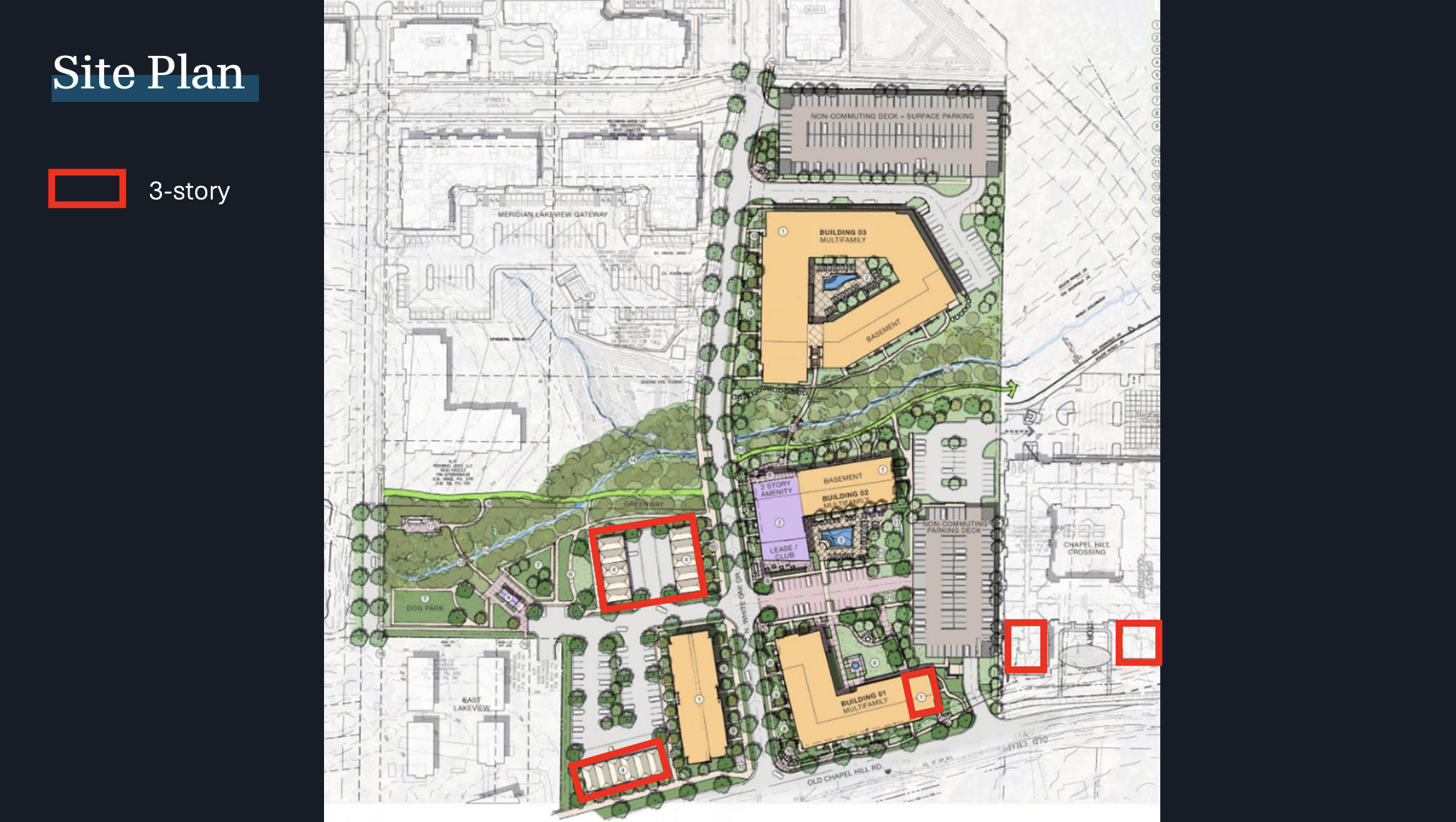
Location for Old Chapel Hill Apartment’s three-story buildings. (Photo via Zom Living.)
For example, only 12 percent of the site’s buildings would step down to three-stories, with most remaining at four or five. But Nollert responded to the concerns by stating how he hears from other residents that they want taller buildings in town to accommodate more people.
“My job, I think, is to represent what it is that they are thinking about when they say ‘I want to be able to live in Chapel Hill ever. I want to be able to live here after I’m out of school,’” Nollert said. “I just talked to a man who grew up here, graduated, and said ‘There’s nowhere for me to live in Chapel Hill. I’m leaving.’ Those are problems that we have to build housing to solve, and that makes our economy stronger too.”
Another repeated public comment focused on how Zom’s latest proposal lacked specific design renderings for the property. Calling the example images “ambiguous” and “incomplete,” many speakers said they are not against bringing density to the area, but they are worried about the council approving a project without knowing what it will look like and its potential impact on the neighboring communities.
But Mayor Jess Anderson said she is fine with having broader design plans at this stage.
“There’s a lot that happens after we see projects, after we approve projects,” Anderson said. “Projects cannot get a certificate of occupancy without being reviewed by OWASA, Duke Energy, our staff. There’s a lot that goes into making sure that those aren’t issues. I can absolutely understand those concerns, and I think they’ll be addressed in a different phase.”
To view the full Town Council meeting, click here.
Featured image via Zom Living.
Chapelboro.com does not charge subscription fees, and you can directly support our efforts in local journalism here. Want more of what you see on Chapelboro? Let us bring free local news and community information to you by signing up for our newsletter.

